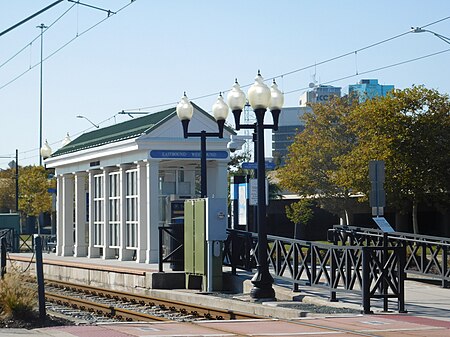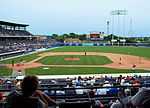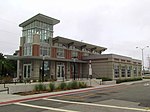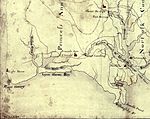Downtown Norfolk serves as the traditional center of commerce, government, and culture in the Hampton Roads region. Norfolk, Virginia's downtown waterfront shipping and port activities historically played host to numerous and often noxious port and shipping-related uses. With the advent of containerized shipping in the mid-19th century, the shipping uses located on Norfolk's downtown waterfront became obsolete as larger and more modern port facilities opened elsewhere in the region. The vacant piers and cargo warehouses eventually became a blight on downtown and Norfolk's fortunes as a whole. But in the second half of the century, Norfolk had a vibrant retail community in its suburbs; companies like Smith & Welton, High's, Colonial Stores, Goldman's Shoes, Lerner Shops, Hofheimer's, Giant Open Air, Dollar Tree and K & K Toys were regional leaders in their respective fields. Norfolk was also the birthplace of Econo-Travel, now Econo Lodge, one of the nation's first discount motel chains.
Similarly, the advent of newer suburban shopping destinations spelled demise for the fortunes of downtown's Granby Street commercial corridor, located just a few blocks inland from the waterfront. Granby Street traditionally played the role as the premiere shopping and gathering spot in the Hampton Roads region. Retailers ranged from low-priced variety stores such as Woolworth's and Grants to more upscale department stores such as Smith & Welton (1898–1988), Rices Nachmans (1918–1985) and Ames and Brownley (1898–1973), and fine hotels and theaters lined its sidewalks. However, new suburban shopping developments promised more convenience and comfort. The opening of Pembroke Mall in Virginia Beach, the region's first climate controlled shopping mall, and JANAF Shopping Center in Norfolk's Military Circle area, helped foment Granby Street's spiral into commercial obsolescence. With amenities such as ample free parking at the door of one's favorite store, and in the case of Pembroke Mall, climate control, the businesses of downtown's Granby Street found it harder and harder to compete.
Beginning in the 1920s, Norfolk's city leaders began what would be a long push to revive the fortunes of its urban core.











